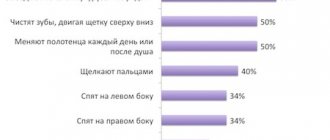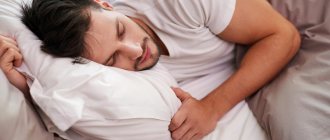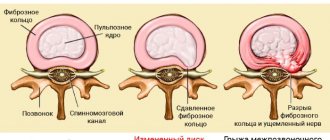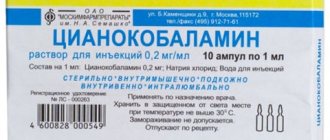Bruxism is a paroxysmal contraction of the masticatory muscles that occurs periodically during sleep, accompanied by clenching of the jaws and grinding of teeth. Bruxism is observed, according to research, in 1-3% of the population, both adults and children.
The clinical picture of the disease consists of sudden grinding of teeth, which continues for several seconds or minutes. During sleep, such attacks are repeated many times and may be accompanied by breathing problems, changes in blood pressure, and heart rate.
Causes of Bruxism
Due to the large number of etiological theories, this disease can be diagnosed by neurological, dental, gastroenterological, and otolaryngological doctors. Risk factors that can trigger the development of pathology include the following conditions:
- psycho-emotional stress;
- stress;
- malocclusion;
- damage to the v pair of cranial nerves;
- inflammation of the temporomandibular joint;
- dental anomalies;
- poor-quality installation of dentures;
- adenoids;
- inflammation of the nasal mucosa;
- deviated nasal septum;
- helminthic infestation;
- gastroesophageal reflux;
- traumatic brain injury;
- Parkinson's disease.
Bruxism in adolescents may be associated with hormonal changes in the body, increased stress on the nervous system, and emotional instability. There is an increased likelihood of the disease occurring in people who smoke, drink alcohol, drink large quantities of coffee, take sleeping pills or antidepressants, and often chew chewing gum.
Efficiency of eliminating wedge-shaped defect
Considering the level of modern dentistry clinics, a wedge-shaped dental defect can be treated at most stages. However, there are a number of notes here. Firstly, as already mentioned, a wedge-shaped defect does not occur on its own, but is a consequence of other pathologies and diseases. Hiding a visual defect will not bring tangible benefits without eliminating the root cause. Considering that in some cases the treatment is complex, patients should contact a clinic staffed by experienced dentists, orthodontists and orthopedists. Elimination of a wedge-shaped defect requires good self-discipline and compliance with all the specialist’s instructions (diet, proper hygiene and the purchase of appropriate products), so a successful cure requires a lot of work on the part of the patient.
Types of bruxism
Due to the development of the disease, it is divided into two main types:
- primary bruxism - associated with heredity, transmitted at the level of genetic information from parents;
- secondary occurs as a result of other pathological conditions.
Taking into account the peculiarities of the course of the disease, there are three of its forms, which arise sequentially, namely:
- initial stage - characterized by grinding of teeth, without any additional complaints from patients;
- acute form - in addition to the symptoms that arose in the initial stage, pain occurs during clenching of the jaws;
- chronic process - represents the development of complicated conditions such as periodontitis, abrasion of enamel.
Depending on what time of day the disease manifests itself, it can be daytime, nighttime, or combined.
Causes.
The causes of bruxism are not fully understood. According to most researchers, bruxism more often occurs in people experiencing stress, psychological disorders that lead to internal anxiety, anger, tension, and an excited state before bedtime. In addition, the causes of bruxism can be sleep disorders, namely somnambulism, enuresis, nightmares, snoring and periods of respiratory arrest during sleep.
As a rule, the diagnosis is established on the basis of anamnesis. The patient may complain, in addition to teeth grinding, of muscle and joint pain in the lower jaw. The diagnosis can be confirmed using a polysomnographic study, which records the contraction of the masticatory muscles. Polysomnography is also important to exclude epilepsy as a causative factor of bruxism.
Symptoms of Bruxism
Clinical signs of pathology provoke the following complaints in patients:
- grinding of teeth during sleep, which lasts about ten seconds, this symptom is often noted by relatives as the patient does not control his movements and does not notice muscle contractions during sleep;
- pain in the teeth or face;
- dizziness;
- increased fatigue, daytime sleepiness.
There is also a connection between bruxism and tinnitus - sometimes this symptom may not be associated with otolaryngological pathology. Nocturnal bruxism is often diagnosed in adults and children, however, manifestations of the disease can also appear during the day.
Why is bruxism dangerous?
In case of teeth grinding during sleep, treatment should be prompt. During the grinding process, both the incisors and molars rub vigorously against each other. If the problem is not treated for a long time, the enamel will wear off, it will become sensitive, prone to chips and cracks, and a wedge-shaped defect may appear - damage to the tooth in the neck area. In addition, the service life of fillings and dentures is reduced, periodontitis develops, and healthy teeth are lost. Problems arise with the joints of the face and neck, pain appears, and the masticatory muscles suffer. In the process of grinding teeth, the soft tissues of the oral cavity can be damaged, which provokes inflammatory processes. Bruxism is a contraindication for certain types of dental treatment, including aligners, braces, dentures and others.
Diagnosis of bruxism
To make a diagnosis, the dentist carefully listens to the patient’s complaints and conducts an examination of the oral cavity. Brux checkers can also be used - these are special mouthguards made in accordance with the structure of the patient’s dentition, which he puts on at night. The next day, they are submitted to the attending physician, who conducts an analysis, calculating which teeth are subject to excess load.
Additional examination methods can be used:
- electromyography is a method for diagnosing bioelectric potentials that arise in various muscle groups during their excitation and contraction, allowing one to evaluate the activity of muscle activity;
- polysomnography is an objective study consisting of recording various indicators of breathing, posture, electrical biopotentials of the muscular system, and cardiac activity, which are recorded during a person’s physiological sleep.
The presence of the fact of the disease does not provide complete information for prescribing treatment; an important aspect is to determine its root cause; for this, the patient must consult a neurologist for bruxism, an ENT specialist, or a gastroenterologist.
How to recognize the disease
The so-called attack of bruxism occurs during sleep and lasts about 10 seconds. The frequency of repetitions is different for everyone: for some, several times a night, and for others, once a week. The patient himself does not notice this and does not wake up; the symptoms of the disease are noted by members of the household. For those who live alone, identifying the disease can be difficult. First, listen to your feelings: pain in the jaw after sleep, headaches, dizziness and lack of sleep can be signs of bruxism. If you repeatedly notice these symptoms, consult your doctor.
A specialist at the clinic will conduct external diagnostics using brux checkers. These are special mouthguards that are developed based on impressions of the patient’s jaw. This method allows not only to diagnose pathology, but also to determine why teeth chatter during sleep. The Brooks Checker must be installed in the mouth before bedtime, and removed in the morning and submitted to the clinic for analysis. The mouthguard “imprints” the behavior of the teeth during sleep; the marks give the doctor information about the movement of the jaw at night and the contact of teeth. Also, using special equipment, the doctor checks the potential activity of the maxillofacial muscles. All these manipulations allow us to make an accurate diagnosis. To determine the causes of bruxism, you will need to consult related specialists.
Treatment of bruxism
Taking into account the etiology of the disease, the optimal therapeutic method is selected. There are the following patient management options:
- drug treatment - includes the prescription of medication to prevent involuntary contractions of the muscles of the masticatory group, multivitamin complexes, Ca and Mg preparations, bruxism is treated with Botox;
- psychotherapeutic activities - involve attending self-control training to relieve nervous tension and stress;
- physiotherapy - based on the prescription of special exercises and self-massage for bruxism, placing warm compresses on the jaw, and manual procedures.
The dentist carries out grinding of the dentition, installing implants and dentures, correcting the bite, prescribing the wearing of special mouthguards for bruxism to reduce overstrain of the teeth.
Treatment.
Treatment of bruxism still remains a difficult problem. It depends largely on the time of development, causes and nature of the disease. Its treatment will be more successful the earlier the disease is diagnosed. You should not be concerned about short-term (up to 10 seconds) irregular attacks of teeth grinding. Most likely, this is not bruxism, but immediate reactions to stressful situations of a healthy person. The alarm should be sounded when such attacks become regular.
It is almost pointless to fight bruxism on your own. As soon as you suspect you have this disease, contact a sleep specialist. He will give you professional advice and prescribe competent treatment. It is important to know that bruxism in children sometimes does not require special treatment, and may eventually go away on its own by the age of 6-7 years. Bruxism in adults must be treated.
If bruxism persists in an adult, then:
- If possible, it is necessary to eliminate any existing dental problems or malocclusions.
- While sleeping, wear a special intraoral protective device (mouth guard) made of rubber or soft plastic, which is made to the shape and size of your teeth, is fixed between the teeth and prevents injury. Although this device helps to cope with bruxism, it does not cure it.
- As an additional treatment, you can use magnesium, calcium and B vitamins. Saturating the body with these microelements and vitamins can reduce the convulsive activity of the masticatory muscles during sleep.
- You can also apply a warm, damp towel to your cheeks, this will help you relax muscles that are tired from clenching your teeth.
- Learn to relax. - Since the main cause of bruxism is everyday stress, any means of relieving stress can help you - listening to music, reading books, walking or taking a bath. You may need to seek counseling to learn how to effectively cope with stressful situations.
- Psychotherapy is the best way to help, which is aimed at identifying conflicts, understanding them and developing the ability to more effectively cope with the everyday difficulties of life.
Bruxism in children
In childhood, this symptomatology can manifest itself during the change of dentition from baby teeth to permanent ones - this is not a sign of a pathological process. Often, specific treatment is not required; by the age of six, these signs may disappear on their own.
The causes of night and daytime bruxism can be adenoids, psychological stress, malocclusion, and helminthic infestation. Overeating is also a risk factor; the child should not eat solid, heavy foods, especially if this disease is present; the diet should consist of soups, yoghurts, fruits and vegetables, and cereals.
Symptomatic manifestations include grinding of teeth at night, headache, lack of sleep, and drowsiness. Diagnosis is based on visual research methods, electromyography and polysomnography data.
Which doctor should I contact?
If you experience bruxism, you should first consult a dentist. Perhaps he will refer you to other specialists, in particular to a neurologist or psychotherapist. After all, the main risk factor for bruxism is severe stress.
If bruxism is started, it will affect not only the condition of the teeth. Prolonged grinding of teeth leads to headaches, neck and back pain, and depression.
Treatment is carried out in two directions. The first involves the use of special dental structures - mouth guards, which prevent tooth wear. The second direction is related to the elimination of nervous tension.
Consequences of bruxism
The negative consequences of the disease include the development of the following pathological conditions:
- increased abrasion of tooth enamel;
- increased sensitivity to high and low temperatures;
- superficial damage to the enamel - cracks, chips;
- periodontal inflammation;
- pathological looseness of teeth, contributing to their loss;
- breakage of artificial crowns, dentures, implants;
- functional disorders in the temporomandibular joint;
- hypertrophic processes of masticatory muscles;
- lack of full range of motion in the jaw joint.
Causes of wedge-shaped defect
Experts identify several reasons for the occurrence of a wedge-shaped defect.
- Bite abnormalities.
When the jaws close, the load is distributed incorrectly and excessive pressure is placed on the cervical area of some teeth. The same situation can occur in patients with bruxism. - Mechanical damage.
Using highly abrasive cleaning products (toothbrush with too hard bristles, improper brushing technique, etc.). At the moment, this reason is considered not so significant, however, toothpaste for wedge-shaped tooth defects should be as gentle as possible. - Poor oral hygiene.
Plaque and tartar contribute to the demineralization of tooth enamel and the loss of calcium ions, weakening the protective properties of the enamel. - Gingivitis, periodontitis and gastrointestinal diseases.
Gum disease weakens the enamel and exposes the neck of the tooth, and stomach problems can cause acid imbalance, which is also an important factor in the occurrence of a wedge-shaped defect.







